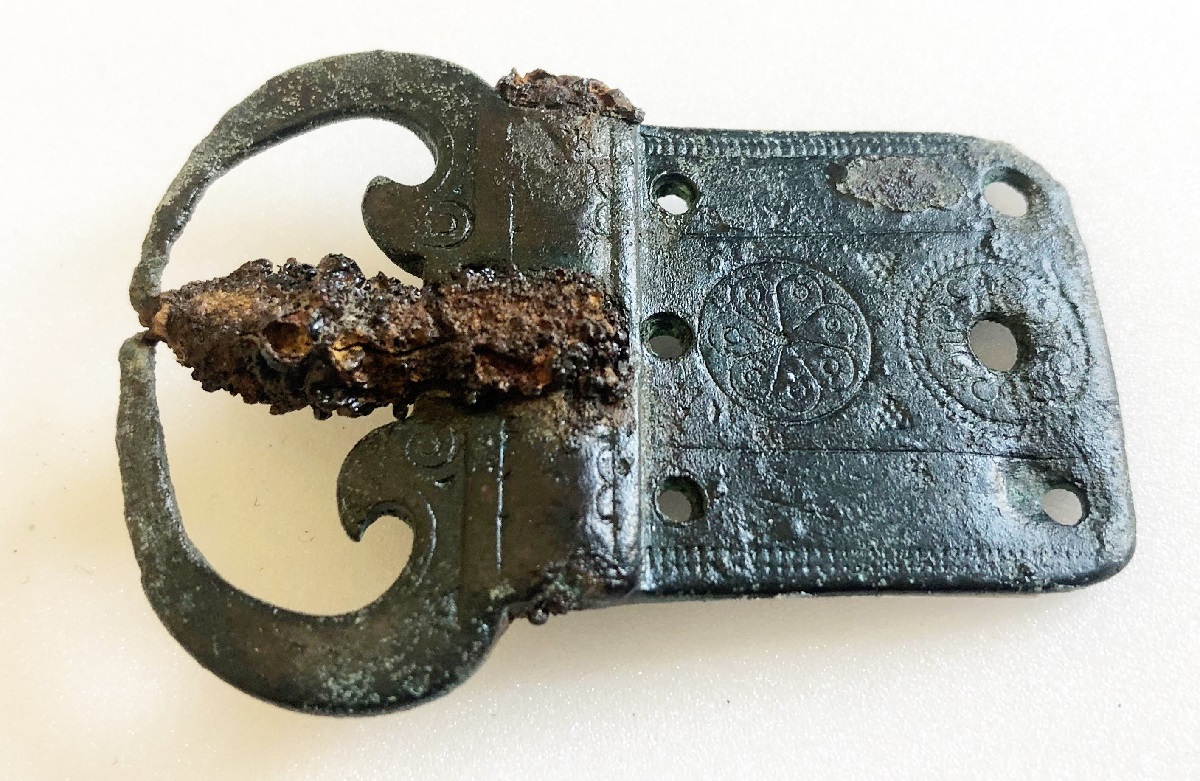Bishopstone Anglo-Saxon Cemetery: work towards publication

A working party has been established with the objective of bringing the Anglo-Saxon cemetery at Rookery Hill at Bishopstone, East Sussex to publication within the next three years.
Assessment of the cemetery post-excavation is in partnership with Brighton & Hove Museums which holds the human remains in its care, plus the archive from the associated Anglo-Saxon settlement.
The Society of Antiquaries of London have generously provided a grant (£4,950 from the Philips Fund) to enable completion of a report on the skeletons by osteoarchaeologist Dr Paola Ponce of the University of York.
In addition, the Council for British Archaeology South-East have kindly provided funding for specialist photography of the human remains.
Work on the bones will be conducted at Brighton Museum & Art Gallery in Summer 2023 which will reveal fascinating insights into the Anglo-Saxon community, their health and diet.
Dr Tom Booth of The Francis Crick Institute will obtain ancient DNA (aDNA) samples with the aim of establishing the geographical origins of the Migration Period people buried in the cemetery.

Earlier excavations
The cemetery and traces of associated settlement were excavated between 1967 and 1968 under very challenging conditions during a housing development at the Harbour View Estate in Bishopstone.
The excavation was directed by David Thomson. Only one object has ever been published, by the late Vera Evison: a Quoit Brooch style buckle in Antiquaries Journal in 1968.
The cemetery is believed to date to the 5th and 6th Centuries. Much credit goes to the late Eric Holden who recorded some of the graves and provided the only known photographs of numbered graves, as well as the only photograph of a general view of the site.
Excavations on adjacent farmland of the associated Anglo-Saxon settlement and earlier activity of Neolithic, later Bronze Age, Iron Age and Romano-British date (including late 4th century AD) were published by Martin Bell in Sussex Archaeological Collections 115 (1977).
A monograph was published by Dr Gabor Thomas in 2010, The later Anglo-Saxon settlement at Bishopstone, which concerns a successor site in the valley below Rookery Hill.

The importance of the site
This complex is exceptional, and the cemetery is a high priority for publication due to the combination of activity on site –
- An Anglo-Saxon cemetery and associated settlement
- The presence of very late Romano-British activity on the same site
- An extensively excavated possible successor later Saxon site in the valley below
A catalogue of the cemetery finds has been compiled by Dr Nick Stoodley, and other significant progress on the cemetery finds has been arranged by David Worsell, of which conservation of the finds by Jacqui Watson (Fishbourne Roman Palace) has been especially important.
To date there has been some assessment of the human bones together with some isotope and aDNA studies. These contributions lay good foundations for the post-excavation programme. Other ambitions for the project include community engagement activity and a new geophysical survey.
The working party consists of:
Dr Martin Bell (University of Reading)
Dr Paola Ponce (University of York)
Dr Sue Harrington (Durham University)
Dr Tom Booth (The Francis Crick Institute)
David Worsell (Brighton & Hove Archaeological Society)
Brighton & Hove Museums are represented by the Curator of Local History & Archaeology, Dan Robertson, assisted by former curator Andy Maxted

